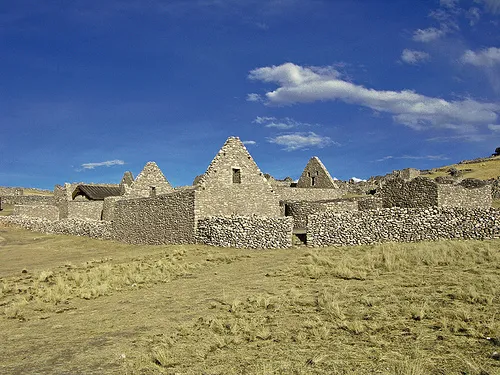Kanamarka, also known as Cunmarka, is a significant archaeological site located in the Cusco Region of Peru. It is a testament to the engineering prowess of the pre-Inca cultures that thrived in the Andean highlands. The site features a complex of stone structures, including terraces, walls, and possibly ceremonial spaces, which offer insights into the ancient societies that once inhabited the region. Kanamarka is less known than its famous counterpart, Machu Picchu, but it remains an important piece of the cultural heritage of Peru.
Get your dose of History via Email
Historical Background of Kanamarka
The discovery of Kanamarka is not well-documented in historical records. However, it is clear that the site was built by a pre-Inca culture. The exact identity of the builders remains a subject of research. The architecture suggests it was constructed during a period when the Andean civilizations were flourishing, before the rise of the Inca Empire.
Local oral traditions and limited archaeological studies provide some insight into Kanamarka’s past. These sources suggest that the site may have been inhabited or used by successive cultures, including the Incas. The Incas were known for expanding their empire and integrating earlier structures into their own building projects.
Kanamarka has not been the scene of any known historically significant events. However, its existence adds to the understanding of the pre-Inca cultures in the region. The site’s structures and artifacts contribute to the broader narrative of Andean civilizations.
There is no specific record of who discovered Kanamarka or when it was first documented by historians or archaeologists. Nonetheless, it is part of Peru’s rich archaeological heritage and is protected under Peruvian law. The site is open to visitors, although it does not attract the same level of attention as more prominent sites like Machu Picchu.
The lack of extensive research on Kanamarka means that many details about its history remain unknown. However, the site continues to be an area of interest for archaeologists and historians who are piecing together the complex history of the Andean region.
About Kanamarka
Kanamarka is an impressive example of pre-Inca architecture. The site consists of a series of stone structures that demonstrate the advanced masonry skills of its builders. The structures are made of cut stone, carefully fitted together without the use of mortar.
The site includes terraces that were likely used for agriculture, taking advantage of the steep Andean terrain. These terraces not only provided a means of food production but also helped prevent soil erosion and managed water flow.
Among the architectural highlights of Kanamarka are the remains of what might have been ceremonial spaces or plazas. These areas could have served as gathering places for the community or for religious rituals.
The construction methods and building materials used at Kanamarka are similar to those found at other pre-Inca sites. This similarity suggests a shared cultural heritage and knowledge of stonework across different Andean civilizations.
Despite the site’s current state of ruin, the remaining structures offer a glimpse into the ingenuity of the site’s builders. The precise fitting of stones and the strategic use of the natural landscape are hallmarks of Kanamarka’s design.
Theories and Interpretations
Several theories exist about the purpose of Kanamarka. Some suggest it was a ceremonial center, while others believe it was a fortress or a residential complex. The true purpose remains a topic of debate among scholars.
The mysteries of Kanamarka include the exact functions of its various structures. Without written records, archaeologists rely on the layout of the site and comparisons with other similar sites to make educated guesses.
Interpretations of Kanamarka are matched to historical records of the region. These records include accounts from the Inca period and earlier. However, the scarcity of direct references to Kanamarka makes these interpretations speculative.
Dating of the site has been carried out using methods such as stratigraphy and radiocarbon dating. These techniques provide estimates of the age of the structures, but the results are not definitive.
The ongoing research at Kanamarka may uncover new information that could clarify its history and purpose. Until then, the site remains an enigmatic piece of Peru’s archaeological puzzle.
At a glance
Country: Peru
Civilization: Pre-Inca culture
Age: Exact age unknown, pre-dates the Inca Empire
Conclusion and Sources
The information in this article has been obtained from reputable sources, including:
- Wikipedia: https://en.wikipedia.org/wiki/Kanamarka

